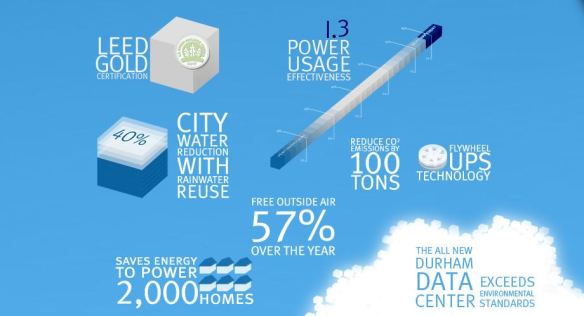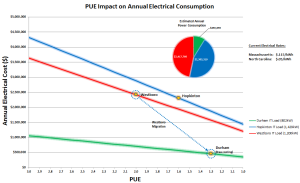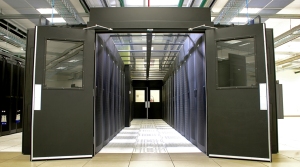Today, everyone is talking about IT in the cloud, but there still has to be a physical infrastructure on the back end on which to run the cloud. Welcome to EMC’s Durham Data Center.
Our 20,000-square foot, state-of-the-art facility illustrates the most efficient way to implement the hardware your organization needs to run the cloud. It features one of the largest Vblock environments in existence. Its leading-edge green features demonstrate the savings that can be gained with a creative approach to environmental technology. And finally, our Data Center serves to showcase the full array of EMC’s products and solutions in the real world as we “drink our own champagne” in virtualizing, automating, and backing up some 12 petabytes of data.
Our virtual tour of the Durham Data Center gives you a high level understanding of how our data center works and a glimpse of EMC Cloud computing using Vblock architecture. It features purpose-built Vblocks which run our SAP-based, enterprise resource planning (ERP) system and Exchange environment, as well as 100 percent tapeless backup environments built on our Data Domain and Avamar technologies. With tens of thousands of VMs in our data center, our sales staff can tap in to Durham to demonstrate products and services in a real-life lab setting.
 EMC decided to design and build a brand new, state-of-the art cloud data center in Durham to address the fact that its longtime data facility in Westborough, MA was nearing capacity and facing escalating power costs. We began construction in Durham in January 2010 and unveiled the new data center in March of 2011.
EMC decided to design and build a brand new, state-of-the art cloud data center in Durham to address the fact that its longtime data facility in Westborough, MA was nearing capacity and facing escalating power costs. We began construction in Durham in January 2010 and unveiled the new data center in March of 2011.

In touring our facility, you will see how the data center is saving money for EMC by not just talking about being green but by implementing green initiatives that are truly cost effective. For example, we are about to achieve 100 percent cold aisle containment in the data center, which will save us millions of dollars in energy costs.
Cold aisle containment means our servers and Vblocks are contained in enclosed aisles that allow us to keep the cold air where we need it in order to more effectively cool our equipment. That reduces cooling requirements for the air outside the aisles. We first tested this strategy on a few aisles of equipment but recently adopted the configuration throughout the data center. By the end of the summer, we will only need to cool the data center to 78 degrees rather than the traditional 72-degree requirement.
Our data center also uses energy modeling technology to maximize power distribution and recycles rainwater to reduce water usage by 40 percent.
Unlike traditional data centers, in which a substantial portion of the square footage is taken up with facilities infrastructure such as power distribution units and back-up power equipment, our data center is 100 percent “white space,” usable for actual IT needs. Our facilities infrastructure is housed in dedicated space outside the data center.
Not only does this mean added data center storage space, but it also ensures greater data center security since there is no need for facilities maintenance personnel to enter the data center itself. The only people entering the data center are those directly working on data center business.
I like to say that EMC’s Durham Data Center is like Disney World for data center operations people, but it also holds plenty of attraction for corporate leaders guiding their organizations on the journey to the cloud. So use our virtual tour to get an animated, high-level view of our cloud-optimized, 100 percent virtualized infrastructure and the physical world on which it runs. And if you find yourself interested in the more detailed nuts and bolts of our data center, come to Durham for a more in-depth tour.
Click Here for the Virtual Tour of the EMC Durham Data Center
Read the blog series by Stephen Doherty, Consultant IT Project Manager, for a deeper look at the EMC Durham Data Center migration.